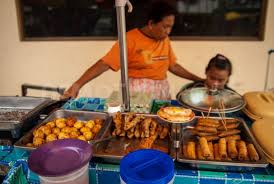
“Sidewalk Vending” means engaging in the business of peddling, vending, selling, or displaying for sale any merchandise or food item, when both the vendor and the vendee are upon a public sidewalk or sidewalk area in the Central Business District.
Each actor has a role. Everyone must participate in order for society to progress and to develop.
Rapid urbanization in political and economic centers in the Philippines has acted as a funnel to a stream of migration of both skilled and unskilled workers from the rural and even off-urban areas of the archipelago. The promise of good pay and better living conditions, which ultimately will not be necessarily true for some, is the usual plot to the story of every migrant who leaves the province for the glitz of the urban jungle.
When we say society is dynamic it simply means that every actor has the freedom, the right and the responsibility to participate in mechanisms that help run things. Governance, economics, market plays, and the overall scheme for the order of things are neither selected nor elected responsibilities; nor are these monopolized rights by the privileged few or the tyrant majority.
Perhaps the most conspicuous representative of the urban informal sector is the sidewalk vendor. These sidewalk vendors are there everywhere you go and that is even an understatement.
Sidewalk vendors are people we see every day, but we hardly notice them unless they are selling something oversized (beds), or cute (a Sto. Niño in full costume), or they arrive in an ox-cart filled with chairs, hammocks and other handicrafts.
As the malls slowly become part of life in the 21st century, vendors become scarce as antiques. Street vendors are still to be found in some parts of town but totally absent in more affluent parts, a casualty of changes in the lifestyle and livelihood of the Gen X.
In Quezon City alone recent records show that there are about 10,000 to 12,000 sidewalk vendors (IMC 2004). In Cebu City, a vendorsâ organization boasts of at least 10,000 registered members (Birondo 2004).
Sidewalk vendors have always been a site to behold in the panorama of Philippine society. Although we cannot claim that this phenomenon is endemic or indigenous to Filipino culture and society, the persona of the sidewalk vendor is omnipresent within and in the very fabric of Filipino society. We see these sidewalk vendors along the street as we leave our homes. We pass by them as we wait for our ride to work. They are in the vicinity of schools, in the compound of churches, inside cemetery grounds, parks and amusement centers. They may be located on top of overpasses, or in underpasses. In fact, the term sidewalk has become blurred because these vendors have occupied not only sidewalks but literally the streets.
A sidewalk vendor is a testament to the Filipino spirit of entrepreneurship in spite and despite the numerous odds in pursuing livelihood in a very competitive environment like these urban areas. The fact that these vendors are able to tap into a network of producers, manufacturers and even bootleggers proves their resiliency amidst competition against bigger and more established stores with bigger capital.
As these entrepreneurs in the urban informal economy prosper they are able to increase their purchasing power and they go out of the scope of their sector to participate in the formal economy either as producers or distributors of goods or consumers. In both cases, their success in the urban informal economy would have made them as empowered actors.
Geddes (1998) talks about social cohesion referring to the reconciliation of a system of organization based on market forces, freedom of opportunity and enterprise with a commitment to the values of internal solidarity and mutual support which ensures open access to benefit and protection for all members of society. Although this definition was given in the context of events that happened in Europe, the term may well be a point for discussion as we seek ways to enhance participatory process in any society – in our society.
Social cohesion means there is freedom of opportunity and enterprise allowing open access to benefits. As long as the practice of the freedom of opportunity and enterprise does not disturb internal solidarity within the society then any form of practice of such freedom by any actor would be true to the spirit of social cohesion. Any actor invoking the freedom of opportunity and enterprise while promoting internal solidarity and mutual support must not be labeled a nuisance to society.
Sources:
Click to access Street%20Sidewalk%20Vendor%20INFO.pdf
http://www.seasite.niu.edu/tagalog/Modules/Modules/PhilippineEconomy/ocampo_article.htm
http://getrealphilippines.com/blog/2012/12/occupy-the-sidewalk/
Click to access Street%20Sidewalk%20Vendor%20INFO.pdf
